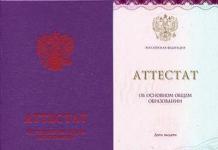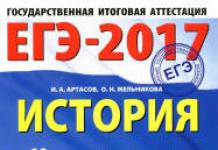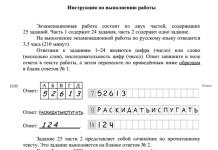Rice. 4.1.1. Reactor self-silencing when positive reactivity is introduced
Rice. 4.1.2. Reactor self-suppression in case of complete loss of coolant circulation
Rice. 4.1.3. The temperature of the fuel and the reactor pressure vessel during depressurization of the primary circuit
The listed features of HTGR provide a low level of damage to the core (micro-pillars) in all possible accidents, including beyond design basis, and, as a result, a low level of their radiation consequences with a minimum of systems and equipment for localizing radionuclide releases, which improves technical and economic indicators. All this makes it possible to consider the possibility of placing such energy sources in close proximity to residential areas and enterprises, which is important from the point of view of reducing losses during the transportation of thermal energy, especially at high temperatures.
4.2. Radiation safety of high-temperature gas-cooled reactors
HTGR reactors with fuel elements based on microfuel (MF) and graphite have a number of advantages in terms of radiation safety over other types of reactors. Knowledge of the migration characteristics of fission products (FPs) through microelement coatings makes it possible to carry out a fairly accurate quantitative analysis of their leakage from fuel elements during the entire operation of the plant. The use of a large number of microelements (10 6-10 8 pcs.) in the presence of their quality control excludes a sharp increase in the fraction of MTs with broken coatings and leakage of fission products. The absence of metals in the core minimizes the proportion of activated impurities.
Leakage of fission products from ceramic fuel elements is determined by the manufacturing technology and, as experience from operating reactors shows, lies at a level that meets safety requirements.
The number of fission products (i-nucleide) n i in the coolant is determined by the relation (for fission products, for which 1/λi Dni/dt = BiFi-(λi+k i)ni, Where В i is the rate of formation of the studied isotope; F i is the relative leakage of fission products of the i-nuclide into the primary circuit (leakage of fission products from fuel rods); λi - decay constant; r - fuel element run; ki - fraction of atoms removed from the coolant Due to various processes, including leakage of fission products together with the coolant (due to leaks in the circuit), precipitation of fission products on the surface of the primary circuit, removal of fission products by the coolant cleaning system, burnup under the influence of neutrons. Sources of leakage of fission products from fuel elements of HTGR reactors are intact particles without contamination, microparticles with damaged defective coatings (damages can be of technological or radiation origin), and fuel contamination of microparticle coatings, the matrix and the outer surface of fuel elements. In general, the relative leakage of fission products from fuel elements can be represented as follows: Where ε is the proportion of particles with defective coatings; l1, l 2 - the proportion of fuel in the form of contamination of the microelement coatings and the core matrix. It is shown that the proportion of fuel in the coating of particles can be less than 10-6 of the total fuel content in fuel rods and, apparently, in the future, when the technology is developed, it can be reduced; f k is the relative leakage from undamaged microfuels. Experimental work has shown that the relative leakage from undamaged microfuels coated with RuC and SiC can be taken equal to 0 for all fission products; f"k is the relative leakage from particles with damaged coating; its value significantly depends on the nature of the damage to the coating, and its determination is a difficult task; f c,f L,f"c, f"L", are relative leakages from cores coatings of fuel rods in the absence and presence of contamination in them, respectively. The experience of developing the technology of manufacturing and quality control of fuel rods shows that the relative leakage of fission products from fuel rods is mainly determined by the proportion of particles with damaged coatings and the nature of the damage. There are currently no data available to numerically evaluate the impact of coating quality on leakage. Therefore, in engineering calculations, Equivalent values of the number of particles ε1",ε1", having completely damaged coatings from RuC (to characterize the leakage of gaseous fission products and halogens) and from SiC (to characterize the leakage of metallic fission products), at which the integral leakage of individual nucleides is equal to that observed in the experiment. As a rule, damage equivalence is introduced through the equilibrium relative leakage in the 133 Xe isotope. The fuel elements of HTGR reactors must meet the requirement Leakage of inert gases and iodine. The helium activity of the primary circuit is largely determined by the activity of gaseous fission products (f.f.d.) At the operating temperature of the fuel elements of the HTGR reactor (t< 1600 °С) относительная утечка г.п.д.,
а также I и Те может быть представлена в виде Where E133 Xe is the equilibrium relative leakage 133 Xe; P - coefficient characterizing the increase in leakage Kg compared to Xe (in the first approximation, P ~ 4). In table. 4.2.1 shows the values of the relative leakage of the g.p.d. for a 1000 MW reactor under the assumption that the equivalent fraction of damaged particles by 133 Xe /F133 Xe = 10-5. The total activity of I and Te isotopes, which characterize the leakage from fuel elements, lies at the level of Xe activity. However, when assessing the activity of helium with respect to iodine, it is necessary to take into account the deposition of I and Te on the contour surfaces. According to various estimates, the deposition coefficient of these isotopes may lie in the range 10-3-10-4. Ignorance of data on the release, deposition and transport of fission products on the surfaces of the primary circuit equipment can significantly complicate the repair work. Leakage of metallic fission products Cs, Sr, Ag. When determining the leakage of Cs, Sr, it is essential to take into account the leakage of their precursors: 90 Kr, 137 Xe, as well as the influence of retention of Cs, Sr by matrix materials. It is known that Cs, Sr effectively Absorbed by graphite used in reactors. Silver is also strongly absorbed by graphite at temperatures up to 1000-1050 ° C. These isotopes, like isotopes I, are effectively deposited on the surfaces of the primary circuit. However, at present there are many ambiguities in the behavior of these isotopes in fuel elements and in the reactor as a whole. Table 4.2.1 Loop activity at plant power of 1000 MW (excluding the effect of helium leakage and operation of the cleaning system) Nucleide Yield per division, % F∙10 5 A, Ci Krypton 83m 114 min 0.54 0.49 22.5 85 4.48 h 1.3 0.75 82.5 85* 10.76 years 0.27 100 - 87 76.4 min 2.53 0.4 85 88 2.77 h 3.56 0.59 177 89 190 s 4.6 0.083 32 90 33 s 5.0 0.034 14.3 91 9.8 s 3.5 0.019 5.5 ΣAKr - - - ~420 Xenon 133m 2.2 days 0.16 0.65 8.7 133 5.27 days 6.69 1,550 135m 15.6 min 0.93 4.5∙10-2 3.6 135 9.16 h 6.43 0.27 145 137 3.8 min 6.18 2.2∙10-2 11 138 14.1 min 6.6 0.042 23 139 39.68 s 5.4 9.3∙10-3 4.2 140 14 s 3.5 5.5∙10-3 1.6 ΣAXe - - - ~ 750 ΣAKr+Xe ~120 * To calculate the activity of 85 Kr, it is necessary to take into account the operation of the cleaning system and the leakage of the circuit. In table. Table 4.2.2 shows possible values of the leakage activity of a number of radioactive fission products during normal operation of a 600 MW(e) facility, illustrating the radiation Nuyu safety HTGR. The assessment was carried out under the assumption that the effective fraction of destroyed particles is ~10-4, the rate of helium leakage from the loop is ~0.2% per day; cleaning efficiency of the ventilation system - 10. Table 4.2.2 Fission product leakage activity under normal plant operating conditions fission product Full activity, 10 7 Ci Leak in the coolant Circuit activity, Ki Housing leakage, mCi/day Leakage to the atmosphere, mCi/day I, Te 3.7 3∙10 3 Ci 3 6 0.6 90 Sr 0.24 24 Ci/year 0.5 1 0.1 inert gases 25 - 2,4∙10 4 1,2∙10 4 2,4∙10 4 emergency situations. Emergencies are decisive in the analysis of the radiation safety of HTGR installations. In case of a pressure loss accident, it is most important to know the desorption coefficients of I, Sr, Cs isotopes from the surfaces of the primary circuit equipment, which accumulate (Sr, Cs) on the equipment during the entire reactor run. In case of accidents leading to overheating of fuel elements, it is necessary to reduce the duration of overheating, since experimental studies show the resistance of microelements to short-term overheating up to a temperature of 2000-2100 °C. In addition, a large number of microelements in various conditions of their work is guaranteed from simultaneous overheating and destruction of a significant proportion of them. Ingress of water into the circuit can accelerate the corrosion of graphite (C + 2H 2<->CH 4). However, reliable control of impurities and the operation of the purification system allow us to believe that the safety of the installations will be ensured. The protective barriers for retaining fission products in the HTGR are as follows: fuel core, fuel core coatings, fuel cell graphite matrix, power vessels of the primary circuit, reinforced concrete containment. Chapter 5. MAIN HTGR PROJECTS DEVELOPED IN RUSSIA 5.1. High-temperature gas-cooled reactor VGR-50 of the power chemical plant ABTU-Ts-50 In 1974, Russia developed the ABTU-Ts-50 experimental energy-chemical plant with a high-temperature gas-cooled reactor VGR-50 (Fig. 5.1.1). Rice. 5.1.1. Scheme of a power chemical plant with a VGR-50 reactor: 1 - steam generator; 2 - blower; 3 - coaxial pipeline; 4 - loading capacity; 5 - VGR-50 reactor; 6 - mechanism for unloading the irradiator; 7 - irradiator; 8 - distribution mechanism; 9 - capacity of damaged fuel rods; 10 - separation mechanism; 11 - rejection and injection mechanism; 12 - dispenser This installation makes it possible to obtain electricity, as well as to use a nuclear reactor as a source of radiation for radiation-chemical and energy-technological processes. For industrial installations (for example, in the chemical, metallurgical and other sectors of the economy), the non-stop operation of the reactor during the entire technological period is of decisive importance. production cycle. This condition is met to a greater extent by a reactor with continuous refueling during operation at power. VGR-50 was designed as the first pilot reactor with continuous fuel flow in the core. During development, the following fundamental provisions were included in the design of the reactor: the use of free filling of spherical fuel elements in the core; implementation of the principle of continuous passage of the fuel rods of the core when the reactor is operating at power; the use of graphite as a moderator, which weakly absorbs neutrons; use of helium as a coolant; ensuring a high degree of safety due to the negative temperature coefficient of reactivity in combination with the high heat capacity of the core; reactivity compensation with spherical absorbing elements (pels), the number of which in the core during the campaign may vary; the location of the rods of the control and protection system (CPS) in the side reflector and the rods that are directly introduced into the backfill of ball elements; use of the existing technology for the manufacture of high-pressure metal vessels and the use for the manufacture of materials mastered by the industry and well-proven in operation in nuclear reactors; ensuring the possibility of assembly and dismantling of reactor internals. The VGR-50 reactor (Fig. 5.1.2) consists of the following main elements: a high-pressure pressure vessel with a cover on which the CPS electromagnetic drives and loading devices are located. Inside the body there is an active zone formed by a spherical filling of fuel rods and pellets, control rods, a basket with graphite masonry, an upper graphite reflector, an upper radiation shield, a separating device and in-reactor control assemblies (IRC). The CPS and VRK systems ensure the normal operation of the reactor and the receipt of operational information for control, alarm and protection. The reactor provides for a number of independent systems for influencing reactivity: a system of control rods, a system for changing the number of pellets in the core during the campaign, a system for unloading fuel elements from the core. Rice. 5.1.2. Reactor VGR-50: I - submersible compensating rod drive (PKS); 2 - drive rods AR and AZ; 3 - top protection; 4 - housing cover; 5 - upper reflector; 6 - PKS rod; 7 - rod AR and AZ; 8 - active zone; 9 - basket; 10 - reactor vessel; II - gas collector; 12 - lower reflector; 13 - branch pipe for the exit of fuel rods and pelov; 14 - housing support; 15 - dispenser; 16 - branch pipe inlet-outlet of the coolant; 17 - channel for unloading the fuel cells and fuel rods from the core; 18 - side reflector; 19 - assembly of in-reactor control; 20 - ball inlet pipe The VGR-50 control and protection system provides for a quick termination of the nuclear reaction in the core, automatic maintenance of the reactor power at a given level, and transfer of the reactor from one power level to another. In the CPS system of the reactor, electromagnetic drives are used, by means of which the reciprocating movement of the absorbing rods in the channels (24 pieces) and the introduction Submersible compensating rods (4 pcs.) into the ball filling of the core. The system for changing the number of pellets in the core (SIKP) provides compensation for slow changes in reactivity during the reactor run. SIKP includes a container for absorbing elements, spherical ducts with appropriate shut-off valves and devices for detecting and outputting pels. The VRK system makes it possible during operation to measure the temperature and pressure drops in certain sections of the coolant circulation path in the reactor, as well as neutron fluxes along the height and radius of the core. Thermoelectric thermometers, pneumometric tubes and direct charge detectors are used as detectors in the assemblies of the VRC, which allow monitoring the state of the reactor and the circulation circuit of the spherical elements of the installation. The strong-tight vessel of the VGR-50 reactor is welded from solid forged shells and an elliptical bottom. In the upper part of the housing there are branch pipes for loading fuel rods and pellets into the core, in the lower part there are four branch pipes for supplying and removing helium coolant and four branch pipes on the bottom of the housing for unloading fuel rods and pellets from the reactor. The maximum outer diameter of the case is 4580 mm, the height of the case is 10 800 mm. The spherical cover is connected with the help of pins to the reactor vessel. Branch pipes with flanged connectors are located on the reactor vessel cover for installation of CPS rod drives, loading devices and RSC assemblies. The flange connector between the cover and the body is sealed with a mechanical seal made of corrosion-resistant steel with a copper gasket. The torus seal is welded to the reactor vessel and lid during installation. A special cavity is provided between the gasket and the toroidal seal, which makes it possible to check the mounting seams of the torus seal for helium density and, if necessary, obtain information about the operation of the gasket during operation. The vessel and lid of the reactor are made of low-alloyed chromium-molybdenum pearlitic steel, which satisfies the conditions of long-term heat resistance and long-term strength under neutron irradiation. Selected steel is used to make housings of pressurized water reactors and has proven itself well in operating conditions. In the manufacture of the body and cover of the VGR-50, it was supposed to almost completely use the technology for manufacturing pressurized water reactors. Inside the case there is an upper radiation shield, an upper graphite reflector, a basket with graphite masonry and an active zone, a support shell and a distributing device. To carry out repairs and control of the inner surface of the hull, internal structures and assembly of the RTO, the upper protection, the upper end reflector and the basket with graphite lining are made removable. The upper radiation shield consists of a cylindrical shell filled with absorbing material. Graphite blocks of the upper end reflector are suspended from the lower plate of radiation protection by means of metal rods. The reactor basket is a cylindrical shell, inside which a graphite stack is installed on the bottom plate, consisting of side and bottom reflectors. The side and bottom reflectors are formed by a number of columns made of individual blocks of reactor graphite. The columns of the side reflector are connected to the shell of the basket by means of rods located in the peripheral holes of the graphite blocks of the side reflector. On the inner surface of the side reflector there are protrusions (pylons) included in the ball filling. In the side reflector there are 24 channels for the CPS rods (including 12 channels in the pylons) and 12 channels for the ARC assemblies. The lower end reflector has a central channel for unloading fuel rods and pellets from the core and a hot coolant collector into which the coolant from the core and the unloading channel enters through specially made slots in the lower end reflector. The inner surface of the lower reflector is a conical surface with angles of 45 and 60°. The configuration of the inner surface of the reflector and the diameter of the discharge channel were determined on the basis of model experiments on spherical dynamics. A distributing device is fixed on the bottom of the reactor, which is designed to distribute fuel rods and pellets coming into it from the unloading channel into four branch pipes and further into the rejection and injection mechanisms of the installation. The design of the distributing device Troystva provides unloading of fuel rods and pellets from the core in various emergency situations, including when a graphite block gets into the unloading channel. The coolant circulation circuit in the reactor is designed in such a way that the temperature of the metal of the vessel, lid and internal structures does not exceed 350 °C, therefore, corrosion-resistant steel, which does not become brittle under irradiation, was chosen as the metal of the internal structures (top protection, upper basket reflector, distributing device). , practically does not reduce the mechanical properties up to a temperature of 350 °C and can operate under reactor conditions for 25-30 years. Considering that the maximum temperature of graphite stack blocks does not exceed 850 °C, they are made from reactor graphite, which is currently used for graphite stack blocks of RBMK reactors. The active zone of the VGR-50 reactor is formed by a free filling of fuel rods and pellets and is limited by the inner surfaces of the side and bottom reflectors and the filling level. The fuel elements are made of microfuel elements in a graphite matrix enclosed in a spherical graphite shell with an outer diameter of 60 mm. In the core, the concomitant movement of fuel rods and coolant is chosen. The coolant circulation in the reactor (see Fig. 5.1.1) is carried out by centrifugal blowers. The coolant cooled in the steam generators and pumped by gas blowers enters the reactor through four branch pipes located in the lower part of the vessel and rises up along the annular gap between the vessel and the basket. The main part of this flow is sent directly to the core, a smaller part (~8%) rises, cools the reactor lid, upper shield, and upper reflector, after which it is sent to the core. Part of the coolant entering the reactor (~10%) is directed downward into the space between the bottom of the basket and the bottom of the vessel. Here, a part of the descending flow is directed to the channels of the CPS rods, the other part of the flow enters the unloading channel to cool the fuel elements. The coolant flows from the core and from the unloading channel enter the hot gas collector, from which it is discharged through four pipes from the reactor to the steam generators and further to the gas blowers, thus closing the circulation loop. As a result of the development and implementation of neutron-physical and thermal-hydraulic calculations, the following main characteristics of the reactor were obtained: Thermal power of the reactor, MW 136 Coolant Helium Pressure in the reactor, MPa 4 Heat carrier temperature, °С: At the entrance to the reactor 296 At the outlet of the reactor 810 Coolant flow through the reactor, kg/s 51 Core dimensions, m: Diameter 2.8 Height 4.5 Specific energy intensity of the core, kW/l Type of fuel rod and pellet Ball Outer diameter of fuel rod and absorbing element, mm Single Download Campaign, ef. day 450 Average fuel burnup, MW "day/t 100,000 The developed design and the obtained calculated characteristics show the promise of using such reactors. The design of the VGR-50 reactor made it possible to test the main fundamental solutions and to accumulate experience in operation and design for the creation of more powerful HTGR-type reactors. 5.2. Pilot industrial power plant VG-400 The installation was designed for the integrated production of high-potential thermal energy (~950 °C) and electricity and can be used to implement energy-intensive processes in a number of industries (chemical, petrochemical, etc.). The option of using high-temperature Ratura gas-cooled reactor VG-400 for a chemical-technological plant for the production of ammonia. The facility uses an intermediate helium circuit, which prevents radioactive fission products from entering the chemical circuit and contamination of the primary circuit by products of chemical production (Fig. 5.2.1). The intermediate circuit increases the safety and reliability of the installation, and also ensures its versatility in relation to the use of various technological productions. In the VG-400 reactor, it was supposed to implement the principle of a single passage of the spherical fuel elements of the core (OPAZ) per campaign, which makes it possible to reduce the temperature of the fuel elements and carry out their overload when operating at power. In 1980-1981, work was carried out on the technical design of the VG-400 reactor with the following main characteristics: Thermal power, MW 1000 Helium temperature, °C: At the core exit 950 At the entrance 350 Helium pressure, MPa 5 Core dimensions D/H, m 6.4/4.8 Fuel rod type Ball Fuel rod diameter, mm 60 Number of fuel rods in the core 8.10 5 Initial fuel enrichment, % 6.5 Average burnup, MW day/t 70,000 Campaign, ef. day 320 Number of cooling loops 4 Housing material Prestressed concrete Steam parameters: Pressure, MPa 17.5 Temperature, ° С 535 Rice. 5.2.1. Principal diagram of the VG-400 plant: 1 - reactor vessel made of PNZhB; 2 - steam generator; 3 - high-temperature intermediate heat exchanger VPTO-110; 4 - loading system; 5 - technological production; 6 - steam turbine plant with a generator; 7 - emergency cooling system; 8 - reactor core; 9 - unloading system; 10 - bypass valve; 11 - main circulation blower with a shut-off valve; 12 - primary circuit safety device Studies have been carried out to refine the parameters of the fuel load and the design of the core. Much attention was paid to studies of emergency operation modes, substantiation of the operability of the core elements, ensuring joint operating modes of the reactor and the ammonia production process unit (Fig. 5.2.2). Calculation and experimental studies of the body made of prestressed reinforced concrete, thermal insulation were carried out, the laws of motion of spherical fuel rods and The efforts of introducing the CPS rods into the ball filling were determined on models 1:10; 1:3; 1:1 (cell), as well as the technology of helium coolant, etc. The creation of the VG-400 installation was supposed to carry out a representative check and development of various equipment for industrial installations for power engineering purposes. Rice. 5.2.2. Scheme of safety barriers: 1 - active zone with spherical fuel rods; 2 - case made of PNZHB with double-walled hermetic cladding; 3 - spherical fuel element with a graphite shell; 4 - microfuel with a four-layer coating of RuS and SiC; 5 - sealed emergency shell 5.3. Reactor of modular type VGM Under the scientific leadership of the IAE them. I.V. Kurchatov, OKBM and VNIIAM developed modular HTGR with spherical fuel rods for power and power technology installations for the simultaneous production of electricity and thermal energy for energy technology purposes. The most advanced project was the VGM-200 modular reactor with a thermal power of 200 MW for a power plant. In the VGM project, a number of technical solutions were developed that meet domestic standards and conditions for the manufacture of equipment and systems. The VGM reactor has a cylindrical core (without pylons) with fuel balls placed in it in the form of a free filling, moving according to the principle of multiple circulation. Limiting the specific power of the core to 3 MW/m 3 with a diameter of 3 m and a height of about 9 m ensures that the fuel temperature in the reactor does not exceed the level of 1600 °C without the effect of active cooldown means, including the loss of coolant. The reactor plant has one main reactor cooling circuit and one auxiliary cooling system (ACO). The coolant moves in the core from top to bottom. The main cooling circuit includes the main circulation blower, high temperature heat exchanger and steam generator. A phased development of the installation was planned: At the first stage at a temperature of 750 °C with the generation of superheated steam; At the second stage, at temperatures up to 950 °C, with the generation of high-potential thermal energy in a high-temperature heat exchanger and superheated steam in a steam generator. The reactor of the VGM facility has two independent systems for influencing reactivity based on different principles of operation: a rod system consisting of 24 rods (~3.4% Δk/k) and a spherical reactivity compensation system (RSCR) consisting of 22 channel reflector, with an absorber in the form of small (~6-10 mm) balls (~10.8% Δk/k). The rod system provides compensation for fast reactivity effects. SHSKR serves to compensate for slower Reactivity effects, such as full temperature effect and depoisoning when the plant is cooled down. The absorber is loaded into the SHSKR channels under the action of gravity from special containers. The unloading of the absorber from the channels and its lifting into the containers are carried out pneumatically. In all emergency situations, including those in case of depressurization of the circuit, the removal of residual heat from the core is carried out due to the surface cooling system (SCS), consisting of three independent channels based on the passive principle of operation. Thermal energy is transferred through the reactor vessel to a water cooler located in the reactor shaft. The design of the VGM-200 reactor is shown in fig. 5.3.1. Main characteristics of the VGI-200 reactor: Thermal power, MW 200 Electric power, MW 80 Helium temperature and pressure, °С/MPa 750 (950)/7 Core dimensions D/H, m 3/9.4 Fuel cores Uranium dioxide Fuel rod shape, outer diameter, m Ball, 60 Number of fuel elements in the core Uranium enrichment, % 8 Heat density, MW.t/m 3 3.1 Estimated burnup, MWt/kg 80 Campaign, days 950 The rate of circulation of fuel rods through the core 10-15 Technological production Electricity + hydrogen Switchgear scheme Double-circuit Rice. 5.3.1. Reactor VGM-200: 1 - reactor; 2 - power building; 3 - intermediate heat exchanger; 4 - steam generator; 5 - blower; 6 - cooling system; 7 - fuel rod circulation system; 8 - system of absorbing balls; 9 - helium purification system; 10 - relief valve; 11 - steam turbine system (energy conversion) Chapter 6. MODULAR HIGH-TEMPERATURE HELIUM REACTOR WITH A GT-MGR One of the new generation reactors that meet the requirements of the developing large-scale nuclear power industry is the modular high-temperature helium reactor with a gas turbine (GT-MGR). The design of this reactor is currently being developed jointly by Russian firms (State Atomic Energy Corporation Rosatom, RRC Kurchatov Institute) and the United States (ORNL, GA). The principal features of the GT-MGR are: High efficiency of power generation (efficiency ~50%); The possibility of using high-temperature thermal energy for technological production; Increased safety due to self-protection and the impossibility of core melting during severe accidents; Efficient use of nuclear fuel and the possibility of implementing various options for the fuel cycle (uranium, plutonium, thorium); Reduced thermal and radiation impact on the environment. The introduction of the GT-MHR solves many problems of the nuclear power industry and increases the competitiveness of nuclear power plants. The essential advantages of the GT-MGR are the expansion of the use of atomic energy in the field of industrial high-temperature technologies and the expansion of the circle of countries - users of nuclear energy. In 1997, enterprises of the Ministry of Atomic Energy of Russia (OKBM, VNIINM, NII NPO Luch, SCC, VNIPIET), RRC Kurchatov Institute and foreign partners developed a conceptual design of the GT-MGR. In the process of developing the project, another important feature of the GT-MGR was confirmed: the technical feasibility and economic efficiency of using it for the disposal of weapons-grade plutonium. Preliminary studies carried out in Russia and the United States (GA) during 1993-1995 on the use of a weapon Tonium as fuel in HTGR showed the unique ability of this type of reactor to provide deep (up to 90%) burning of the initially loaded plutonium during its single irradiation in the reactor. At present, a large amount of weapons-grade and power-grade plutonium has been accumulated. The accumulated plutonium is potentially dangerous due to the possibility of unauthorized distribution to create nuclear weapons. Plutonium is a valuable energy product. Therefore, an effective solution to the problem of plutonium disposition is its incineration in power reactors, in particular, in GT-MHR. The GT-MGR power plant consists of two blocks connected together: a modular high-temperature reactor (MGR) and a gas turbine direct cycle energy converter (GT) (Fig. 6.1). The MHR concept is based on the use of a core with a graphite moderator, fuel in the form of compact microspheres with multilayer ceramic coatings, and helium as a coolant. There are no metal structures in the core. This makes it possible to have a helium temperature at the reactor outlet of 850 °C or more, which ensures high efficiency of electricity production in a direct gas turbine cycle, as well as the possibility of using MHR as a source of industrial high-temperature thermal energy. The active zone of the ring-type MHR consists of 1020 hexagonal prismatic fuel blocks placed in 102 columns of 10 blocks in each height. 1/3 of the fuel blocks are reloaded annually. To ensure the reactivity margin and the negative temperature coefficient in the core, burnable absorber rods (Er 2 O 3) are used, placed in the channels of the fuel blocks. The core has a negative temperature coefficient of reactivity at any operating temperature. Pu-fuel in GT-MHR is used in the form of particles with a multilayer coating (Fig. 6.2). Plutonium oxide in the form of cores is coated with a porous buffer layer of graphite, a dense layer of pyrographite, then a layer of silicon carbide and another layer of pyrographite. Rice. 6.1. Reactor module GT-MGR: 1 - generator; 2 - recuperator module; 3 - turbocharger; 4 - intermediate cooler module; 5 - pre-cooler module; 6 - CPS assembly; 7 - active zone; 8 - housing system; 9 - cooling system of the shutdown reactor Rice. 6.2. Components of GT-MGR fuel rods with plutonium fuel The particles are mixed with a graphite matrix and formed into cylindrical fuel compacts in the form of a rod with a diameter of 12.5 mm and a height of 50.0 mm. They, in turn, are loaded into hexagonal prismatic graphite fuel blocks with a height of 0.8 m and a turnkey size of 0.36 m. The main characteristics of the GT-MGR reactor are: Thermal power, MW 600 Electricity generation efficiency, net, % 47.2 Coolant temperature (helium), inlet/outlet, °C Helium temperature at the compressor inlet, °С 26 Helium pressure at reactor inlet, MPa ~7.15 Primary coolant flow rate, kg/s ~316 Core diameter internal/external, m 2.96/4.84 Outer diameter of the radial reflector, m 7 Core height, m 8 Number of absorbing rods 48 Number of Redundant Shutdown System (RSS) channels. The degree of burning Pu-239,% 90 Average burnup, MW day/t 650 Loaded plutonium, kg/year 250 Loaded plutonium enrichment in terms of Pu-239, % Discharged plutonium, kg/year 70 Enrichment of discharged plutonium in terms of Pu-239, % Amount of destroyed weapons-grade plutonium for 60 years for one block, t Reactor vessel material 10Kh9MFB Housing material SPE 15X2NMFA Material of the connecting body 10X9MFB Inner diameter of reactor vessels and PPE, m Reactor vessel height, m 26 Height of the SPE hull, m 37.5 Design pressure of the hull system, MPa 8 Turbomachine rotation frequency, rpm 3000 Power on the generator tires, MW (el) 290.45 Heat exchanger efficiency 0.95 Heat exchanger material 08Х16Н11МЗ Heat transfer surface of the heat exchanger, m 2 ~66,000 GT-MGR is characterized by increased safety. The internal safety features inherent in the GT-MHR exclude core melting in the event of severe reactivity-type accidents and loss of coolant. The safety features and structural characteristics make the GT-MHR resistant to operator errors. GT-MGR is a new generation reactor plant. It is developed on the basis of proven technologies in the world. Most of the technical solutions of the GT-MGR plant are based on the design solutions for the Peach-Bottom and Fort St.Vrain (USA) reactors, worked out at the stage of their construction and operation, and on 30 years of Russian experience in designing HTGR (VG-400 reactors). , VGR-50 and VGM). Helium-cooled reactors operated in the UK, USA and Germany between 1960 and 1986 (Dragon, Peach-Bottom, FSV, AVR, THTR-300) have demonstrated inherent properties of this type of reactor that meet today's high safety requirements. . Experiments carried out at the AVR reactor (Germany) showed the ability of reactors with a moderate power density up to 7 MW/m 3 to cool down without the intervention of active systems and operator actions. The operation of these reactors, as well as domestic radiation testing of HTGR fuel, demonstrated the ability of microfuel rods with multilayer ceramic coatings to provide deep burnup at a very high temperature of fuel rod coatings, under- achievable for other types of reactor plants. When testing plutonium fuel of a similar GT-MHR composition in the Dragon and Peach-Bottom reactors, the following parameters were achieved: burnup up to 750 MW day/kg, fast neutron fluence up to 2.2. 10 21 n/cm 2, temperature up to 1400 °C (Table 6.1). Table 6.1 Summary data on irradiation of fuel particles with TRISO coating in comparison with the requirements for GT-MGR fuel Program Fuel description Max, fluence of fast neutrons, × 10 25 n/m 2 (E>0.18 MeV) Maximum burn-in Temperature range during irradiation, °C 800 MW. day/kg UO 2 fuel particles with TRISO coating in spherical elements Up to 20% fima Fuel particles from UC 2 (93% enrichment) with TRISO coating in compacts Up to 78% fima Fuel particles from UCO (20% enrichment) with TRISO coating in compacts Up to 22% fima Fuel particles from PuO 2-x with TRISO coating in compacts 737 MW. day/kg Up to 1440 End of table 6.1 Germany Fuel particles from UO 2 (10% enrichment) with TRISO coatings in spherical elements and compacts Up to 14.9% fima Fuel particles from UO 2 (4-10% enrichment) with TRISO coating in compacts Up to 2.8 Up to 9.4% fima "Dragon" TRISO Coated PuO 2 Fuel Particles Mixed with Graphite in Compacts 747 MW. day/kg The GT-MHR can use various variants of the nuclear fuel cycle (uranium, plutonium, thorium) and, as already mentioned, weapons-grade plutonium can be efficiently burned. Efficient combustion of weapons-grade plutonium is ensured in a cycle with a single passage of fuel through the reactor without the need for reprocessing and reuse of the fuel. The output of useful energy per gram of loaded plutonium per unit cycle in a GT-MHR is higher than in any other reactor facility, and the composition and shape of the spent fuel provide non-proliferation guarantees. Processing of weapons-grade plutonium into the form of microfuel particles can be carried out in advance, which will help to improve non-proliferation assurances. The power conversion system (PTS) is completely housed in the power conversion housing. The turbomachine consists of a generator, a gas turbine, two sections of the compressor, vertically fixed on one shaft by magnetic bearings. The energy conversion system includes three compact heat exchangers: a highly efficient heat exchanger, water-cooled pre-cooler and intercooler. The circulation scheme is shown in fig. 6.3. Helium coolant with tempera- A temperature of 850 °C and a pressure of 7.15 MPa at the outlet of the reactor is fed to a turbine located in the energy conversion building, which drives an electric generator and high and low pressure compressors. Further, helium through a highly efficient recuperator, having given the maximum amount of thermal energy to the cycle, enters the pre-cooler to discharge thermal energy into the cooling tower. Relatively cold helium at 26°C is supplied to the first section of the compressor, then to an intermediate cooler, where the excess heat energy is discharged to the cooling tower, after which it is fed to the second section of the compressor, from where it passes through the recuperator at a pressure of 7.24 MPa and a temperature of 110°C. Next, helium at a temperature of ~490 °C and a pressure of 7.15 MPa enters the reactor inlet. Rice. 6.3. Schematic diagram of the installation: 1 - reactor; 2 - generator; 3 - turbine; 4, 5 - compressor; 6 - recuperator; 7 - pre-cooler; 8 - intermediate cooler; 9 - generator heat exchanger; 10 - bypass control valve; 11 - cooling system of the mine and the reactor; 12 - auxiliary heat exchanger; 13 - circulator; 14 - air heat exchanger; 15 - helium purification system; 16 - helium storage; 17 - heat exchanger; 18 - cooling tower The scientific, design and production base developed in Russia, the USA, France and Japan for the development of gas turbomachines, high-performance heat exchangers and heat-resistant housings provides a prepared basis for the creation of the GT-MGR unit Options for the disposal of weapons-grade plutonium in the GT-MHR. Institutes of Russia jointly with the GA firm (USA) have carried out studies on the possibility of burning weapons-grade plutonium in the GT-MGR reactor. A single passage of fuel through the reactor is taken as the main starting point. These studies included the evaluation of neutron and thermal-hydraulic parameters, the determination of optimal refueling modes, the evaluation of fuel stability under deep burnup, and feasibility studies. The Joint (U.S. and Russian) WGPu Weapons Fuel Disposition Steering Committee recommended the following initial data for a feasibility comparison of various weapons-grade plutonium disposition options: The amount of plutonium for disposition - 50 tons; Disposition time - 25 years from the start of development. The concept of plutonium disposition in GT-MHR includes the following stages: Processing of plutonium into a coated microfuel form, which excludes its use for military purposes; Combustion of plutonium without recycling in GT-MHR with efficient production of useful energy; Burial of spent fuel in geological rocks without processing. Two options for burning plutonium in GT-MGR reactors have been considered. In the first option, 50 tons of weapons-grade plutonium are converted into the form of microfuel from plutonium oxide with a multilayer coating with the manufacture of fuel compacts and their simultaneous disposal at three-four-module stations (12 units in total) GT-MGR located at three sites (four blocks each) in Seversk, Krasnoyarsk and at the Mayak chemical plant. In the second option, 50 tons of weapons-grade plutonium are converted into microfuel from plutonium oxide with the manufacture of fuel compacts, which are stored in intermediate warehouses and then sent for disposal to four GT-MHR units. Long-term storage of coated particles does not cause any changes in their properties. Plutonium processed into coated particles and compacts satisfies the main disposition criteria for weapons-grade plutonium, including non-proliferation requirements. Fuel compacts can be stored in intermediate warehouses and fed for combustion in the GT-MGR reactor to produce high-temperature thermal energy and electricity. A diagram of the disposition of weapons-grade plutonium is shown in fig. 6.4. Rice. 6.4. Scheme of the disposition of weapons-grade plutonium Modular high-temperature helium reactor GT-MGR has a high efficiency of converting thermal energy into electrical energy. In the GT-MHR project, the amount of useful energy generated per gram of burned plutonium for a single fuel irradiation is greater than in any other reactor system (Table 6.2). Burnout up to 90% of the original Pu-239 is achieved. The amount and isotopic composition of plutonium in spent fuel is such that this plutonium is of no value for military or commercial applications. Nia. The technology for separating plutonium from GT-MHR spent fuel has not been developed, and the low quality of the remaining plutonium does not stimulate its reprocessing. Table 6.2 Comparison of the use of plutonium in power reactors of various types Parameters of GT-MHR 1/3 VVER-1000 (with MOX loading in 1/3 of the zone) Fast sodium reactor BN-800 Thermal power, GW Net efficiency, % 48 33 38 Electric power, GW 0,29 0,33 0,8 Electricity generation, GW∙year, from 50 tons of weapons-grade plutonium Share of Pu-239 destruction, % (without recycling) The GT-MGR reactor can be effectively used to generate useful energy by burning excess weapons-grade plutonium. The high probability of acceptance by society of an alternative to HTGR for the disposal of weapons-grade plutonium is determined not only by such key points as a high level of safety, the impossibility of melting the core, the absence of the need to evacuate the population in any conceivable emergency situations, but also the high degree of burning of the initially loaded plutonium - above the “standard for spent fuel." The construction of a prototype GT-MGR plant and fuel production is expected at the site of the Siberian Chemical Plant (SCC) in the city of Seversk. Creation of the GT-MGR facility and fuel production from weapons-grade plutonium can be one of the most effective areas for the conversion of the SCC, since it provides jobs for specialists with their experience and knowledge, uses the existing infrastructure, ensures the disposal of weapons-grade plutonium, the conversion of plutonium production, and creates the generating facilities necessary for the region. power. The production of plutonium fuel and its use are carried out within the same site of the SCC, which eliminates the risk associated with the transportation of materials containing plutonium outside the protected area. Along with solving the problem of burning weapons-grade plutonium, due to its excellent energy performance and safety properties, the GT-MHR on uranium (thorium) fuel can be effectively used for commercial purposes in the global energy market. Chapter 7. HTGR EXPERIMENTAL FACILITY 7.1. Critical stand GROG In the practice of domestic and foreign reactor building, the development of new reactors provides for the study of their physical characteristics on critical assemblies. One of the first domestic critical stands for the study of the physics of HTGR is created at the IAE. I.V. Kurchatov universal stand GROG. It studies the physics of HTGR, common to all modifications and specific, taking into account the features of various versions of HTGR (primarily the VG-400 reactor). A specific feature of HTGR with spherical fuel rods is the continuous refueling of nuclear fuel, and the fuel rods can pass through the reactor once or repeatedly. The main state of the HTGR operating according to the OPAZ principle is equilibrium, in which fresh spherical fuel elements enter the reactor, and substantially burned out fuel elements exit. This leads to a large inhomogeneity of the nucleic composition of the fuel in the fuel rods and a significant non-uniformity of the neutron fields along the height of the reactor. It should be noted that the parameters of the core of such a reactor depend on many factors and are statistical in nature (associated with the backfilling of spherical fuel rods). All this causes a large amount of research on critical assemblies. The versatility of the forthcoming research, economic and temporal considerations put before the developers of the stand the need to ensure the versatility of the stand, i.e. the possibility of carrying out on it experimental studies of critical systems with significantly different main parameters of the core. In world practice, critical assemblies are used, consisting of two zones: the investigated one, assembled from full-scale elements, and the ignition zone, consisting of model elements and providing the criticality condition. This concept is also used at the GROG critical facility. At the same time, to expand the possibilities of experimental studies, a wide variation in the neutron-physical characteristics of a system of model elements and their closeness to the properties of a system of full-scale elements are provided. Such proximity of the neutron-physical properties of the ignition and the studied zones practically eliminates boundary effects, which increases the representativeness of the studied zone, since in this case the neutron-physical characteristics of the studied zone, even with a small number of natural elements, will be identical to the properties of a large natural system. Structurally, the GROG stand is assembled as follows. A set of graphite blocks forms a cubic stack with a face size of 450 cm. The placement of various combinations of cylindrical elements in the channels of the graphite stack provides different geometric and physical parameters of the core of critical assemblies. Control rods can be placed in the central channels of any graphite stack column. At the corners of the graphite columns, there are cylindrical channels ~2 cm in diameter, into which absorbing elements can be placed to simulate various disturbances and sensors of the measurement system. When extracting graphite blocks, a fragment of the investigated reactor can be inserted in their place. On fig. 7.1.1. The characteristic composition of the critical assembly of the GROG stand is shown, including the central zone of spherical fuel rods under study, the ignition zone and the surrounding graphite reflector. The main parameters of the GROG stand: Graphite masonry geometry, cm Cube 450x450x450 Number of graphite columns 324 Core geometry Arbitrary Maximum linear size, cm 400 Fuel Uranium Maximum enrichment in uranium-235, % 10 Maximum number of model fuel assemblies 2304 Nuclear ratio PC/PU 200-2000 Simulated HTGR operation modes Initial Transient Equilibrium Number of control rods Up to 24 Location Arbitrary Rice. 7.1.1. Critical stand GROG: 1 - spherical fuel elements of the studied area; 2 - graphite blocks of the ignition zone; 3 - graphite reflector blocks; 4 - experimental channel; 5 - CPS rod; 6 - oscillator; 7 - storage of fuel assemblies 7.2. Critical stand "Astra" The Astra critical stand was put into operation at the Kurchatov Institute in 1980. It is intended for experimental study of the neutron-physical parameters of high-temperature helium-cooled reactors (HTGR). Recently, experiments have been carried out on this bench on critical assemblies simulating the physical features of reactors with an annular core, such as RBMK and GT-MGR. Work is carried out in the following main areas: Determination with high accuracy of the initial data on the main materials and elements of the critical assembly, such as graphite blocks of side and end reflectors, fuel rods, control rods, etc.; Carrying out thorough experimental studies of the neutron-physical characteristics of critical assemblies, simulating the features of the designed modular HTGR, with minimal uncertainties in the measured parameters. The results of the experiments are intended to verify the calculation programs used in the design of the VTGR-M, for example, JAR, MCU, PNK, WIMS D4. The general view of the critical stand is shown in fig. 7.2.1. The supporting structure of the critical assembly of the Astra stand is a steel case with a bottom mounted on a rigid foundation. The inner diameter of the case is 3800 mm, the wall thickness of the side surface of the case is 10 mm, the thickness of the bottom is 20 mm. For assemblies with an annular active zone, a side reflector (BO) with an outer diameter of 380 cm and a height of 640 cm and a lower end reflector (LTD) are installed at the bottom of the case, which form a cavity in the middle part. This cavity can be filled with spherical elements, which are fuel elements (FC) in the GT-MHR simulation or a mixture of fuel and absorber elements (PE) in the PBMR simulation (South Africa), forming an annular core. In the central part of the assembly, there is an internal reflector made of graphite blocks when modeling GT-MHR or spherical graphite elements (GE) when modeling PBMR. The space not occupied by the assembly elements (cavities, channels, etc.) is filled with air under normal conditions. This section discusses the assembly that models the GT-MHR. On fig. 7.2.2 shows a general view of critical assemblies with an annular core, simulating GT-MHR, and in fig. 7.2.3 shows a cross-sectional diagram of this assembly. Rice. 7.2.1. General view of the critical stand "Astra" Rice. 7.2.2. General view of the critical assembly with an annular core simulating the GT-MGR reactor on the Astra stand: 1 - side graphite reflector; 2 - annular core; 3 - internal reflector made of graphite blocks Rice. 7.2.3. Cross-sectional diagram of a critical assembly with an annular core, simulating the GT-MGR reactor at the Astra stand: KO1 - KO7 - compensating controls; AZ1-AZ8 - emergency protection bodies; RR - manual control body 7.3. High temperature helium loop PG-100 The PG-100 helium loop created at the Kurchatov Institute was intended for experimental studies on coolant technology, fuel rods and HTGR structural materials. A significant part of the experimental studies carried out in Russia in accordance with the program for the development of fuel elements and equipment for the primary HTGR circuit was carried out on a complex of experimental stands, including a facility for research Checking the tightness of fuel rods, the helium circulation loop PG-100 at the MP reactor, ampoule channels for the study of spherical fuel elements "Kashtan", ampoule channels for the study of microfuel elements "Karat". After testing, fuel rods and samples of materials are tested in protective chambers. Characteristics of experimental stands Installation for research of tightness. All fuel rods and microfuel rods intended for reactor life tests were subjected to preliminary tests for tightness. For this purpose, after preliminary irradiation, they were placed in a sealed heated area, through which helium was blown, which carried the released gaseous fission products (FFP) to the detector. Based on the GPA activity and relative leakage (R/B = F), a conclusion is made about the suitability of fuel rods for reactor tests. The tightness criterion is the condition F< 10-4. Helium loop PG-100. The loop includes the following main technological systems and equipment elements (Fig. 7.3.1): the main gas circuit with an experimental channel, a gas blower unit, a regenerator, heat exchangers, a filter, etc., an intermediate closed water circuit with water pumps, heat exchangers, etc. etc., a helium purification system with a chain of filters, a delay unit and a cryogenic unit, systems for storing, replenishing, cooling down and emergency gas release. The loop is controlled remotely and equipped with a mnemonic circuit. Up to 19 spherical fuel rods or dummies can be loaded into the experimental channel, which are blown by a helium flow. The specified temperature of the gas and fuel elements during the experiment is maintained by controlling the flow of helium through the channel. Rice. 7.3.1. Helium loop PG-100: 1 - reactor tank; 2 - reactor core; 3 - experimental channel; 4 - receiver; 5 - protective membrane; 6 - throttle washer; 7 - cylinder for cooling; 8 - generator; 9-11 - blowers; 12, 13 - heat exchangers; 14 - heater; 15 - copper oxidizing unit; 16 - refrigerator; 17 - block delay; 18 - zeolite filter; 19 - regenerator; 20, 24 - ceramic-metal filter; 21 - cryogenic block; 22, 23 - heat exchangers; 25, 30 - vacuum pump; 26 - protective membrane; 27 - receiver; 28 - throttle washer; 29 - safety valve; 31 - emergency discharge tank Ampoule channels "Kashtan" and "Karat". The channels are designed for testing spherical fuel rods and microfuels in stationary modes. The "Kashtan" channel contains six spherical ampoules, each of which contains one fuel element (Fig. 7.3.2). A graphite liner is installed between the fuel rod and the ampoule, separated from them by certain helium gaps. The ampoules are installed in a special heat conductor, which is in contact with the wall of the loop channel. Heat removal from the fuel element to the cooled surface of the channel is carried out by thermal conduction. The size of the insert and the loading of uranium are selected for each fuel element from the condition of ensuring the required temperature of the fuel element. Rice. 7.3.2. Scheme of the "Kashtan" channel: 1 - thermocouples; 2 - fuel rod; 3 - heat conductor; 4 - gaps; 5 - insert; 6 - clamps; 7 - ampoule The ampoules are connected by tubes to a bench system that allows for a weak flow of helium through the ampule with the removal of products released from the fuel element and determination of their composition for each fuel element using a special analysis system. Some fuel rods are equipped with thermocouples installed in the center of the fuel rod and in its cladding. This makes it possible to measure the temperature drop across the fuel element and determine its thermal conductivity. In the "Karat" channel, microfuel elements were irradiated in free filling and in pressed pellets. The channel contains a number of isolated ampoules located along the length of the active zone. A batch of microfuel elements is placed in each of the ampoules and the specified temperature is maintained. Main research results Helium circulation loop PG-100. The first life tests of a batch of VGR-50 spherical graphite fuel rods were started in April 1979. The main operating parameters of the loop and the conditions for testing fuel rods during two years of operation: Reactor power, MW 27-33 Channel surround power, kW 1700-2800 Helium pressure, MPa 3.8-4.1 Helium consumption, g/s: In the loop 230-250 In the channel 30-100 Helium leakage from the loop (including losses in the analysis of its composition), %/day Gas temperature, °C: In the loop 15-150 In the channel 150-600 In the working area 300-600 Fuel elements temperature, °С 500-900* Heat release in fuel elements, kW/fuel element 0.5-1.5* Operating time at the power of KVG-1 channels, h 13,500 Fluence of neutrons with Е> 0.18 MeV, 10 21 n/cm 2 Burnout (fima), % 4.9-12* GPA output (F) 10-4 * Estimated results. The total operating time of the loop over this period is 13500 h. During the tests, the helium flow rate and pressure were maintained fairly stable, and the total reactor power also changed little. The main factor influencing the energy release in the fuel element and the temperature of the fuel elements and gas in the test section was the power of the energy release in the cells surrounding the channel. The temperature of the fuel rods and gases was maintained at a given level by changing the helium flow rate through the channel. This operation did not affect the operation of the blowers and the total gas flow through the circuit, since the channel is located on the bypass of the main circuit. An analysis of the representativeness of the tests in relation to the operating conditions of the VGR-50 reactor being developed in the USSR shows that the average and maximum values in the range of VGR-50 parameters have been achieved for most parameters (Fig. 7.3.3). Rice. 7.3.3. Representativeness of PG-100 tests The relative leakage of the GPA from fuel rods, obtained by measuring the activity of helium samples from the loop during the tests, did not exceed the value allowed for VGR-50 (F<
10~4). Это свидетельствует о работоспособности испытываемых твэлов
в достигнутом диапазоне параметров. On the PG-100 loop, methods for cleaning and monitoring the composition of helium in relation to HTGR were worked out. The flow diagram of the helium purification system used at PG-100 is similar to the diagram of the unified coolant purification system VGR-50 and VG-400 (Fig. 7.3.4). Rice. 7.3.4. Schematic diagram of technological purification of helium coolant: 1 - zeolite filter; 2 - low-temperature adsorber; 3 - mechanical filter; 4 - heater; 5 - copper oxidizing unit; 6 - delay block; 7 - refrigerator; sampling routes; - gas path of the helium purification system; ===== - main circulation circuit. Purification of helium from impurities is carried out by adsorption on zeolites with preliminary oxidation of CO and H 2 on copper oxide at a temperature of 300 °C. A cryogenic coal block is provided for the absorption of nitrogen, long-lived GPAs and hydrocarbons. The radioactivity of short-lived GPAs is suppressed by a delay on a special carbon block located in front of the zeolites and operating at room temperature. The purification system is located on the bypass of the main circuit (see Fig. 7.3.4), the helium flow rate through it is up to 10 g/s. The long-term operation of the purification system has shown that it provides efficient purification of helium to levels characteristic of HTGR. In table. 7.3.1 shows data characterizing the composition of helium during operation. Table 7.3.1 Cleaning system status H 2 O H 2 CO CH 4 O 2 Ar Shutdown Up to 8 Enable 1 1 2-10 - 110<1 1-2 The main source of impurity leakage during PG-100 operation is gas blower lubrication. The helium activity level in the loop is 10-7 Ci/l (85 Kr each), radioactive contamination of the loop equipment is practically absent. In the vicinity of contaminated equipment (heat exchangers, delay units, mechanical filters), the dose rate is up to 10 μR/s, which ensures maintenance of the equipment without any restrictions. There were no releases of radioactivity into the room during the entire period of operation, air pollution with aerosols and GPA did not exceed 10~10 Ci/l. This indicates a good tightness of the circuit equipment. ampoule channels. "Chestnut". Two channels "Kashtan" were tested with a resource set of 1 10 4 and 1.4∙10 4 h. neutrons (2-3.6) 10 20 n/cm 2. The results obtained in the course of testing showed that if in the first channel "Kashtan-1" the allowable leakage in terms of 135 Xe F= 10 at a burnup depth of 6-8%. The effective thermal conductivity of fuel elements also increased from 15 to 20 W/(m∙K). At present, the Kashtan-3 channel is being irradiated. "Carat". The main parameters of microfuels and the conditions for testing microfuels in the Karat channels are as follows: Micro fuel parameter: Core diameter, microns 400-600 T/D* 0.15/0.5 Buffer layer thickness, microns 15-60 Buffer layer density, g/cm 2 1-1.4 Irradiation conditions: Burnout depth, % 2-15 Fluence of fast neutrons, N/cm 2 10 20-10 21 Temperature, ° С 1100-1900 Medium Helium * T - coating thickness; D - core diameter. Approximately 20 experimental batches of microfuel with a four-layer coating on a UO 2 core were irradiated.As a result of post-reactor studies of microfuels in protective chambers, the following characteristic phenomena were discovered. At a high density of the buffer layer (~1.3 g/cm 3), spear-shaped cracks appear in it, which propagate into the dense carrier layer of RuS and partially destroy it. Under certain irradiation conditions, an amoeba effect was observed in microfuel elements, in which carbon is transferred from the hot side of the PyC coating to the cold side. At temperatures above 1700 °C and a burnout depth of 12-14%, the amoeba effect leads to the complete destruction of coatings. Protective layers of dense pyrolytic carbon and silicon carbide, as shown by metallographic analysis, remain intact in most cases at a burnout depth of up to 10–15% and an irradiation temperature not higher than 1300–1500 °C. Large-scale studies of the properties of microfuels, spherical and prismatic fuel rods, including life tests, are being carried out at RIAR. For this purpose, research reactors SM-3, RBT-6, Mir are used. Channels and irradiators have been created, as well as stands for pre- and post-reactor fuel studies. In addition, reactor tests of spherical fuel rods and MT for the VGR-50 facility were carried out at the research reactors VVR-Ts (Obninsk) and IVV-2 (Yekaterinburg). At the research reactors with loop and ampoule channels created in Russia, comprehensive studies were carried out to develop spherical fuel rods, microfuels and helium technology for domestic HTGR. The resource values of the burnup depth and neutron fluence were achieved to justify the technical design of VGR-50 while maintaining the tightness of the fuel rods and the integrity of the coatings in microfuel rods. 7.4. Out-of-reactor gas circuit of CGS Out-of-reactor loop studies of FP transport can be implemented at the experimental base of Russia (after the modernization of the existing bench equipment and at new facilities). The RRC "Kurchatov Institute" has an out-of-reactor gas circuit - a circulating helium stand (CHF), created in the 1980s, which was successfully operated and is currently mothballed (2006). The problem of radionuclide deposition can be solved at out-of-reactor loop facilities. They are much simpler and have lower levels of radionuclides than in-reactor ones, and therefore are cheaper to manufacture and operate. However, out-of-reactor loops have technical limitations, the main of which is due to the fact that they use artificial FP sources that require the creation of certain temperature conditions to maintain the required FP partial pressure in the coolant and maintain the required chemical composition of the coolant. Therefore, in a number of out-of-reactor loops (KFA, Jülich), weakly irradiated fuel rod samples or a small coolant flow from the primary circuit of the AVR reactor were used as a FP source. There is an ORNL concept design for an out-of-reactor PR transport loop as part of a PR transport program for a steam cycle facility. The ORNL project can be considered in detail when upgrading the CGS or developing a new one. Outline for the GT-MGR program. Consideration should also be given to previous experience in the design and operation of out-of-reactor loops for FP transport at KFA. The TsGS stand was created under the program for the development of HTGR and was used to study the dynamics of impurities for corrosion and the properties of materials depending on the temperature and duration of exposure. Other experiments were also carried out on the stand, but without radioactivity. Placing the stand in a building specialized for work with radioactive materials makes it possible to organize such work at the CGS. On fig. 7.4.1 shows the CGS scheme. The stand has a closed helium circuit, consisting of a gas heater, a refrigerator, a gas blower, a working chamber, two rotary bends, a gas purification and analysis system, pipelines, fittings, etc. The circuit pipelines are designed for pressures up to ~5 MPa, individual components of the circuit - up to ~ 10 MPa. During the operation of the stand, the following parameters were achieved: The maximum gas pressure in the circuit is 10 MPa; Helium consumption 10-15 g/s; Re number ~5000; Maximum heater power 78 kW; The maximum helium temperature after the heater is 1050 °C; Helium temperature at the beginning of the working chamber 975 °С; The helium temperature at the end of the working chamber is 685°C. An electric 4-section nichrome heater is installed on the stand directly in the helium flow. One of the four sections has an automated power control to compensate for daily power fluctuations in the supply network. The working life of the vortex blower installed at the stand is ~2800 h. The blower housing and the shaft rotation bearing are designed for long-term operation at pressures up to ~5 MPa. The stand includes an experimental helium compressor МЦ 125 with the main technical data: Compressor type - centrifugal; Rotation system - gas supports; Electric motor - three-phase 220 V; Current frequency 400 Hz; Compressor inlet pressure 50 MPa; Mass productivity 100 g/s; The pressure increase in the compressor is 1.53 MPa. Installing the compressor in the bench circuit requires the development (or purchase) of a power supply system and testing of the experimental sample itself. Rice. 7.4.1. Scheme of the CGS stand: NTA - low-temperature adsorber; ZF - zeolite filter; MOB - copper oxide block; O - bypass; - cooling water. Measurements: T - temperature; G - helium consumption; P - pressure; ΔР - gas blower head. The bench helium purification system consists of units: copper oxide for the oxidation of H 2 (into water) and CO (in CO 2), a zeolite filter for removing water vapor, and a low-temperature (liquid nitrogen temperature) adsorber made of activated carbon for removing N 2 and CH 4. The bench analysis system consists of a KhTM-73 gas chromatograph, a Baikal moisture meter, a 2210-AL-11 chromatograph (France), an analyzer (H 2 O, H 2, CO 2) Fluorite, and a spectral emission analyzer Optika. The bench was used to study the dynamics of impurities in a loop without samples, the effect of heated helium with impurities on the properties of materials depending on the duration of exposure, the corrosion of graphite in spherical fuel rods in a helium coolant, and the adsorption of water in a helium loop. A technique has been developed for determining the helium flow rate by processing the temperature and power characteristics of the heater. In connection with the single-loop design of the GT-MHR project currently being developed, the problems of radioactivity of the serviced equipment and its cleaning become especially relevant. Therefore, first of all, the circular helium facility (CGS) available at the Kurchatov Institute is supposed to be used to study the transport and deposition of PD in the primary circuit of the GT-MGR. For these purposes, a significant modernization of the stand is necessary. The stand must be equipped with a system (generator) for dosed injection of PD simulators into the helium flow. Fuel rods (compacts) that have undergone weak irradiation in the F-1 reactor of the Kurchatov Institute can also be used as a source of FP. Removable (replaceable) working sections should be installed in the loop contour, in which it is supposed to place metal samples from which the PTS equipment is made. Working areas must be equipped with an electric heater to create the necessary temperature conditions on the samples. The upgraded out-of-reactor CGS circuit with high pressure and coolant flow rate will be used for single tests in order to obtain data on the deposition, entrainment of FP, taking into account the effect of dust, under the operating conditions of the SPE. The dependence of the interaction of Cs, Ag, I and Te a with structural metals, especially with alloys, will be determined. Turbine and heat exchanger (where the highest level of deposits is expected), on temperature, partial pressure, surface condition and coolant chemistry. The data of adsorption/sorption/desorption of impurities for the model description of PD deposition on the surface of various structures of the GT-MHR primary circuit are systematized as sorption isotherms. However, the currently accumulated data is clearly not enough to confidently predict the mass transfer of radionuclides in the primary circuit of the GT-MHR, adsorption and surface diffusion on turbine elements, etc. Moreover, most of the sorption isotherms were obtained at partial pressures of the studied impurities by orders of magnitude higher than can be expected under real conditions of normal operation of the GT-MGR. Modeling the deposition of silver from a flow onto a surface implies consideration of the following processes: Evaporation and entrainment of silver from the surface of the matrix graphite into the coolant; Sorption and desorption of silver on the surfaces of the helium circuit equipment. Based on the above features, the following experimental program for the deposition of silver is proposed: Creation of a source for the generation of silver vapor; Study of silver deposition on surfaces; Simulation of the formation of dust aerosol particles and the deposition of silver on dust particles in the circuit. The performance of the work will allow obtaining silver sorption isotherms for the PADLOC program. Modeling the deposition of cesium from the flow to the surface implies consideration of the following processes: Evaporation, adsorption/desorption at the MT/coolant interface; Cesium adsorption/desorption at the structural material/coolant interface. Based on the above features, the following experimental program for the deposition of cesium is proposed: Creation of a source for the generation of cesium; Doctor of technical sciences AND I. Stolyarevsky, Leading Researcher, National Research Center "Kurchatov Institute", 1. Introduction The growth of world demand for fuel and energy with the resource and environmental limitations of traditional energy makes it timely to prepare a new energy technology that can take on a significant part of the increase in energy needs, stabilizing the consumption of fossil fuels. The Energy Strategy of Russia for the period up to 2020 defines communal heat supply as the most socially significant and fuel-intensive sector of the economy. The demand for nuclear energy sources in the areas of power generation and domestic heat supply is due to the growing cost of fossil fuels and an increase in energy consumption. The key factors in the creation of nuclear power units are the high safety of power plants and their commercial attractiveness. “Strategy for the development of nuclear energy in Russia until 2030 and for the period until 2050”, approved by the Government of the Russian Federation, provides for the generation of heat by nuclear energy sources up to 30 million Gcal / year by 2020 with an annual replacement of consumption of up to 24 billion m 3 of gas. The creation and implementation of nuclear power plants in the heat supply sector will create new generating capacities and ensure savings in natural gas for export abroad, which is a factor of geopolitical significance. However, even the large-scale introduction of nuclear energy into the field of electric generation and municipal heat supply does not solve the problem of the growing demand for motor fuel and industrial heat. The long-term scenario for the development of nuclear energy until 2050 provides for the replacement of fossil fuels not only in the municipal sector, but also in energy-intensive industries by expanding the scope of nuclear energy for the production of hydrogen, process heat, and synthetic fuel. The inevitability of the mass use of new energy technologies is determined by a qualitative change in environmental requirements in the energy sector and transport. The potential for the introduction of nuclear energy in the "non-electric" sphere is determined by the volume of energy consumption of process heat by industry and is not inferior in scale to the electric power industry. In the field of manufacturing industries, the leaders in the consumption of thermal energy are the chemical industry, oil refining, and metallurgy (Table 1). Table 1. Heat consumption by manufacturing industries (2007) Thus, the introduction of nuclear technologies in the heat supply of industrial processes is an urgent task that still needs to be solved. Today, the only nuclear technology that is really capable of most fully solving the problem of replacing fossil fuels in industrial heat supply and transport is the technology of high-temperature modular helium reactors (MHR). The benefits of MGR are determined by the following factors: The possibility of heating the coolant at the exit from the core to a temperature of 1000 °C, which expands the scope of nuclear energy not only for the production of electricity and municipal heat, but also for technological purposes, including the production of hydrogen; Possibility of using various schemes of the power unit: with a gas turbine cycle, with a steam turbine cycle, with a circuit for transferring high-temperature heat to technological production; The passive principle of residual heat removal, which ensures a high level of safety, including in the event of a complete loss of the primary coolant; Ensuring the regime of non-proliferation of fissile materials, which is based on the properties of ceramic microfuels; Low thermal impact on the environment due to the possibility of implementing efficient thermodynamic cycles for converting thermal energy into electricity (in the direct Brayton gas turbine cycle, the efficiency of energy conversion can reach 50% or more); Possibility of combined generation of electricity and heat; The minimum number of systems and components of the reactor plant (RP) and plant when using the gas turbine cycle in the primary circuit, creating prerequisites for reducing capital and operating costs; Possibility of modular execution of the unit with a wide range of module power (from 200 to 600 MW) and variation of AC power by a set of modules; 2. Design solutions for energy sources for industrial heat supply Based on predictive studies of the development and needs of the energy market, pre-conceptual studies of a prototype commercial MGR reactor plant with a unified modular helium reactor with a thermal power of ~200 MW and, based on it, a number of energy sources for various energy technological applications were carried out. The design basis for these developments was the world experience in creating experimental facilities with a high-temperature gas-cooled reactor (HTGR), the experience in developing in Russia (more than 40 years) projects of reactor plants with HTGR of various power levels (from 100 to 1000 MW) and purposes. The results of the development of the project of the GT-MGR reactor facility with a modular helium reactor, carried out within the framework of the Russian-American program, were also used. As part of the study, several options for MHR for power engineering purposes were considered: For the production of electricity and municipal heat supply, with the conversion of the thermal energy of the core into electrical energy in the direct gas turbine (GT) Brighton cycle - MGR-100 GT; For the production of electricity and hydrogen by high-temperature steam electrolysis (HEP) - MGR-100 VEP; For the production of hydrogen by the method of steam reforming of methane (SCM) - For high-temperature heat supply of petrochemical production (NP) -MGR-100 NP. Each version of the MGR-100 installation consists of energy and technological parts. The energy part is maximally unified for all options and is a power unit that includes a reactor and, depending on the purpose, a gas turbine power conversion unit (PET) designed for generating electricity, and (or) blocks of heat exchange equipment. The technological part of the MGR-100, depending on the purpose, is either a process plant for the production of hydrogen or high-temperature heat supply circuits that supply heat to various technological processes. The main criteria for choosing technical solutions were to ensure high technical and economic indicators in terms of generating electricity and high-potential heat, minimizing the impact on maintenance personnel, the public and the environment, and eliminating radioactive contamination of the process product. The energy source configuration is based on the following principles. The power of the reactor and its design are universal for all variants of the energy source; only the parameters of the coolant differ. The choice of the RI power level (215 MW) was determined by: the needs of the electric power industry and communal heat supply; The needs of industrial enterprises in high- and medium-temperature heat supply of technological processes; Technological capabilities of domestic enterprises for the manufacture of the main equipment of the reactor plant, including housings. The reactor is a modular reactor with an active zone consisting of hexagonal prismatic fuel assemblies, with a helium coolant, which has the properties of internal self-protection. Security is ensured through the use of passive principles of operation of systems. Residual heat release and accumulated heat are removed from the core through the reactor pressure vessel to the reactor shaft cooling system and further into the atmosphere using natural physical processes of heat conduction, radiation, convection without exceeding the limits of safe fuel operation, including in accidents with a complete loss of primary coolant , in case of failure of all active means of circulation and power supply sources. The coolant is circulated in the primary circuit loops by the main circulating gas blower (MCP) or compressors of the BPE turbomachine. The layout of all considered variants of the MGR-100 is made taking into account the requirements for the safe operation of the reactor plant in all possible accidents at the NPP. Each RP is located in the NPP main building, which consists of the ground part, which is the reactor maintenance and refueling building (central hall) and underground containment (RP containment) of low pressure, located under the central hall. The containment houses the power equipment of the reactor plant and the equipment of the main systems important to safety. The containment is made of monolithic reinforced concrete, hermetic, with internal dimensions: diameter 35 m, height no more than 35 m, capable of withstanding the internal pressure of the medium up to 0.5 MPa in case of depressurization of the primary circuit of the reactor plant and/or pipelines of the secondary circuit. The containment ensures optimal use of space and volume of premises, high compactness of equipment placement, facilitation of equipment replacement and fuel refueling operations, tightness with respect to adjacent premises of the NPP main building and the environment, heat removal to the ground in beyond design basis accidents. The design of the primary circuit equipment has a block design. The main power equipment of the MGR-100 is located in a steel block of buildings, which consists of a vertical reactor vessel, one to three vertical PET vessels and heat exchange equipment, and one to three horizontal connecting vessels connecting the vertical vessels into a single pressure vessel (Fig. 1). The main equipment housings are similar in size to the VVER reactor vessel. Particular attention is paid to minimizing the number of external pipelines of the primary circuit. Fig.1. The layout of the reactor plants: a) MGR-100 GT; b) MGR-100 VEP; c) MGR‑100 PKM; d) MGR‑100 refinery The energy source options for MGR-100 GT and MGR-100 VEP (Fig. 2.3) provide for the use of a unified gas turbine PET. The central place in the BPE is occupied by a turbomachine (TM), which is a vertical unit consisting of a turbocompressor (TC) and a generator, the rotors of which have different rotational speeds - 9000 rpm and 3000 rpm, respectively. Electromagnetic bearings are used as the main bearings. The generator is located outside the helium circulation loop in the air environment. WPT pre and intermediate coolers are placed around the TC. The heat exchanger is located in the upper part of the housing above the axis of the hot flue. Waste heat is removed from the primary circuit in the WPT precooler and aftercooler by the cooling water system and further to the atmospheric air in fan dry coolers. It is possible to consider the option of using waste heat for heating needs and hot water supply. Heat exchanger units are designed to transfer thermal energy from the reactor to the consumer in energy technology production. Depending on the working environment, the type of process and the likelihood of radioactivity getting into the product of technological production and contamination of the equipment with radioactive products, a two- or three-loop RI scheme can be used. So, in the NPP for the production of hydrogen by the method of high-temperature electrolysis of steam (MGR-100 VEP) and the method of steam reforming of methane (MGR-100 PKM), a two-loop scheme is used. In these processes, the main component of the process medium is water vapor. The analysis performed shows that in case of possible emergency situations with depressurization of the steam generator or high-temperature heat exchanger, the effects of the ingress of hydrogen-containing products into the reactor are reliably regulated by the reactor control and protection systems. The variant of the energy source for supplying heat to petrochemical production (MGR-100 NP) provides for a three-circuit thermal scheme. Heat transfer from the reactor plant to the consumer is carried out through a high-temperature helium-helium intermediate heat exchanger and an intermediate helium circuit, and then to the HP network circuit. This solution limits the release of radioactivity into the network circuit, ensuring the radiation purity of the process product, as well as minimal contamination of the primary circuit with process impurities. The main technical measures aimed at eliminating the potential danger of radioactivity getting into the product of technological production are the creation and maintenance of a guaranteed pressure drop (~0.5 MPa) directed towards the primary circuit, and for the MGR-100 NP version, also the introduction of an intermediate circuit. Operational helium leaks from the intermediate circuit to the primary circuit do not have a negative impact on the reactor plant. 2.1 Energy source MGR-100 GT for power generation and municipal heat supply The power source MGR-100 GT is intended for the production of electricity in a direct gas turbine cycle. The high temperature of the waste heat of the gas turbine cycle (more than 100 °C) makes it possible to use it for hot water supply and heat supply. In the climatic conditions of Russia, such functionality is of great importance. Evidence of this is the data on the annual consumption of natural gas for the production of electricity and heat, which is ~ 135 and 200 billion m 3 , respectively. MGR-100 GT can be operated in two modes: in the mode of electricity production only and in the combined mode of electricity generation and municipal heat supply due to waste heat recovery. Thus, in addition to a higher efficiency of electricity production, MGR-100 GT provides a potential opportunity to obtain a heat utilization factor of about 99%. When the plant is operating in combined mode, waste heat is removed to the heat carrier of the network circuit in network heat exchangers. In power-only mode, the grid loop is turned off and waste heat is removed to the outside air in fan dry coolers. Schematic diagram of MGR-100 GT is shown in Fig. 2. The required temperature of the network water supplied to the consumer (150 ºС) is provided by reducing the flow rate and increasing the pressure in the WPT cooling water circuit. In order to prevent, in the combined mode, the helium temperature at the heat exchanger inlet from exceeding the permissible limits (600 °C), a bypass line with a controlled helium bypass of the primary circuit was organized in addition to the heat exchanger on the HP side (from the HPC outlet to the heat exchanger outlet on the HP side). Fig.2. Schematic diagram of MGR-100 GT The main parameters of the MGR-100 GT in the mode of power generation and public heat supply are shown in Table 2. In the combined mode, the electric power of the plant will be 57 MW, and the thermal power removed by the network water will be 154 MW. The cost of generated electricity, taking into account the beneficial use of waste heat for domestic heat supply, is practically halved compared to the option of operating only in the electricity generation mode. At the same time, the economic effect of eliminating thermal emissions into the environment should be taken into account. 2.2 Energy sources MGR-100 VEP and MGR-100 PKM for hydrogen production The transition to a hydrogen economy is based, among other things, on the creation of a technology for using HTGR energy in hydrogen production processes that have high thermodynamic and technical and economic efficiency. These processes, if possible, should exclude the consumption of fossil fuels, primarily oil and gas, which have limited reserves and are a valuable raw material for industry. These processes include the production of hydrogen from water using the following main methods: electrolysis, thermochemical decomposition, and high-temperature steam electrolysis. Their cost does not depend on the ever-increasing prices for oil and gas, in contrast, for example, to the production of hydrogen from methane. At the same time, for the first stage of the development of hydrogen energy, at still relatively low gas prices, the processes of obtaining hydrogen from methane are considered. An analysis of the requirements for the efficiency of the production of consumed energy and the level of heat temperature allows us to formulate the requirements for HTGR as an energy source, the main of which are: Production of high-potential heat up to 950 °С; No contamination of hydrogen with radioactive substances or their acceptable low level; Low cost of hydrogen production compared to traditional methods; High level of security of the energy technology complex. The following are considered as the main hydrogen production processes at the stage of conceptual development of MGR-100: High temperature electrolysis of water; Steam reforming of natural gas (methane). circuit diagram MGR-100 VEP for the production of electricity and superheated steam of the required parameters in order to obtain hydrogen by high-temperature electrolysis is shown in Fig. 3. The MGR-100 VEP variant is based on the RP configuration with a parallel arrangement of heat exchange loops in the primary circuit. One loop includes the reactor, the steam generating unit and the GCH. The other is the reactor and WPT. Thus, part of the thermal energy (~10%) generated in the reactor core is transferred to the PGB for the needs of hydrogen production, the rest is converted in the WPT into electrical energy in a direct gas turbine cycle. Rice. 3. Schematic diagram of MGR-100 VEP The main parameters of the installation are given in Table 3. The temperature of helium at the outlet of the reactor is 850 °C, which does not exceed the corresponding temperature in the GT-MGR prototype reactor plant. The second circuit is designed to produce superheated steam in the steam generator (Fig. 4). Helium circulation in the PGB is carried out by the main circulation blower. Water is supplied and steam is removed through the SG cover. Superheated to the required parameters, steam is discharged through pipelines to a high-temperature electrolysis unit based on solid oxide electrochemical cells, in which water vapor decomposes into hydrogen and oxygen with the separation of these reagents. The WEP installation is supplied with electricity generated by the WPT generator. Steam reforming of methane is currently the main industrially mastered and adapted for the first stage of the introduction of hydrogen production technologies (together with HTGR) process. It is based on the existing world production of hydrogen. The combination of HTGR and PCM makes it possible to reduce the consumption of natural gas by about 40%, and, consequently, the costs required for the production of hydrogen. The economic efficiency of the introduction of PCM is determined by the price of gas and the temperature of the consumed heat. The required heating temperature of the gas-vapor mixture should not be lower than 800 C, and a further increase in temperature has practically no effect on the efficiency of the process. Fig.5. Schematic diagram of MGR-100 PKM Thermal energy is removed from the reactor to the working medium of the secondary circuit (vapor-gas mixture) in high-temperature heat exchangers (HTO), which are an integral part of the thermoconversion apparatus (TKA). The implementation of the conversion of methane (CH 4 +H 2 0 (steam) + heat→CO 2 +4H 2) occurs in the TKA according to a three-stage scheme. The vapor-gas mixture (steam - 83.5%, CH 4 - 16.5%) is fed sequentially in three stages - TKA1, TKA2 and TKA3. This determines the configuration of the heat transfer unit of the reactor plant. It consists of three separate high-temperature heat exchangers VTO 1, VTO 2, VTO 3 (Fig. 6), representing separate stages (sections) of the block. The location of the WTO sections along the primary coolant flow is parallel, along the gas-vapor mixture flow is sequential. After TKA-3, the gas-vapor mixture (steam-55%, CH 4 , H 2 , CO, CO 2 - 45%) with a high hydrogen concentration sequentially passes the CO 2 and H 2 O purification unit and is sent to the hydrogen separation unit. The return fraction and natural gas are mixed with superheated steam and then sent to the TKA. The circulation of helium in the primary circuit is carried out by the GCH, the vapor-gas mixture is circulated by compressors. The main parameters of the installation are given in Table 4. The helium temperature at the outlet of the reactor is 950 ºС. Depending on the type of layout (loop or block) of the main equipment of the switchgear, the configuration of the heat transfer unit may be different. In a block arrangement, the main equipment of the reactor plant is connected using short pipes of the "pipe in pipe" type; it is advisable to include the MCH in the heat transfer unit as well. 2.3 Energy source MGR‑100 refinery for petrochemical production MGR-100 refinery is designed to generate high-grade or medium-grade heat to meet the technological needs of petrochemical production (heating of network heat carriers), which will save about 14% of processed oil. The design basis for it was the draft design of a modular reactor developed in Russia in the 1980s with a core of spherical fuel rods and a helium outlet temperature of 750 °C. The project was focused on process heat generation based on the requirements of a typical refinery. Fig.7. Schematic diagram of MGR-100 refinery A schematic diagram of the MGR-100 refinery is shown in Fig.7. Helium circulation in the primary and secondary circuits is forced and is carried out by circulation blowers. The working medium of the network circuit is nitrite-nitrate salt. The main parameters of the installation are shown in Table 5. The main consumers of refinery heat (~50% of the thermal power of the reactor) are tubular furnaces designed for thermal catalytic oil refining. According to the level of heating of petroleum products in furnaces, oil refining processes are divided into three types: low-temperature (up to 400 °C), medium-temperature (up to 550 °C) and high-temperature (up to 900 °C). The heat from the MGR-100 refinery is also used to cover the needs of the refinery in process steam (~35% of the thermal power of the reactor) and electricity (~15% of the thermal power of the reactor). The heat transfer unit consists of an intermediate heat exchanger (PHE), GCH, internal metal structures (VKM). PHE (Fig. 8) consists of a pipe system, a set of channels (37 pcs), collecting chambers of “hot” helium of the intermediate circuit, elements of their fastening and sealing. The main circulating gas blower is mounted in the lower part of the PHE body. 3 Issues of concern As part of the completed projects, a schematic configuration and 3-D layout of the installations were developed, the parameters of the contours and characteristics of the main equipment were determined, a calculation justification of the main components of the structure, an analysis of operational and emergency modes, a preliminary analysis of the cost of creating and building a reactor plant, and the stages and plans for R&D were determined. Most of the required R&D, including for the reactor, turbomachine and its components, recuperator, preliminary and intermediate coolers, VKM, is currently being carried out in the scope of technological developments of GT-MGR and MGR-T reactors. The main issues requiring additional R&D are: Development of manufacturability of high-temperature heat exchangers; Justification of the safety of reactor facilities for hydrogen production; Development of RP power control algorithms together with process control systems; Carrying out attestation tests of heat-resistant metallic materials. One of the main restrictions on increasing the helium temperature at the reactor outlet is the maximum allowable temperature for long-term operation of the VKM reactor. With an increase in the helium temperature at the core inlet to 600 °C, in order to achieve an acceptable temperature of the reactor vessel material (~350 °C), it is planned to refine the core design in terms of heat removal to the reactor vessel cooling system. Serious requirements are imposed on gas ducts transporting a heated process medium with a temperature of up to 900 ° C, which should not decrease due to heat losses, since the efficiency of the process depends on the temperature level. Hydrogen production is a potential source of explosion hazard. When analyzing the safety of MGR-100, accidents in the technological part of the plant or at industrial sites should be considered as initial events. In these accidents, the release of technological raw materials or processed products is possible. From a protective action point of view, the worst possible safety implications may be due to blast effects following the explosion of these products. One of the safety criteria should be the non-exceeding of the maximum release of explosive mixtures in technological production. The amount of release is determined by the allowable value of excess pressure in the front of the shock wave, adopted for the containment, systems and elements of the NPP. When analyzing such accidents, one should consider both scenarios with the possibility of an explosion in the immediate vicinity of the reactor, and ensuring safety due to the spatial separation of the nuclear and technological parts. 4 Conclusion The development of MHR technology in Russia from the very beginning was aimed at using nuclear energy not only for electricity generation, but also for industrial heat supply as an alternative to using fossil fuels. The technology of modular HTGR, due to the unique properties of efficiency, safety and environmental friendliness, can provide an integrated energy supply of electricity, heat and fuel, including solving the urgent problem of cost-effective hydrogen production. HTGR-based low-capacity nuclear power plants, which are environmentally safe and require low costs for creation and maintenance, can become important elements of the nuclear power infrastructure of the current century. The design and experimental work completed to date on the variants of modular MGR-100 for various power engineering applications confirms the possibility of meeting the requirements for new generation reactor plants. The development of the HTGR power technology based on the MGR-100 will significantly reduce the overall costs of the HTGR program and demonstrate the possibilities and benefits for the further commercialization of this technology. Bibliography 1. “Nuclear heating in Russia – existing experience, industry potential, development problems” Boldyrev V.M., Collection of abstracts of the intersectoral scientific and technical conference “Regional Nuclear Energy” (Atom Region-2009), November 17-18, 2009, Nizhny Novgorod . 2. Energy strategy of Russia for the period up to 2030. Approved by the order of the Government of Russia dated November 13, 2009 No. 1715 3. “Possibilities and prospects for the use of high-temperature nuclear reactors to provide energy-intensive industries with energy carriers” Ponomarev-Stepnoy N.N., Stolyarevsky A.Ya., Kodochigov N.G. Collection of abstracts of the intersectoral scientific and technical conference “Regional Nuclear Energy” (Atom Region-2009), November 17-18, 2009, Nizhny Novgorod. 4. Article "Development of district heating in Russia", pp. 2-15. Journal “Heat power engineering №12; 2009» S.P. Filippov, Institute for Energy Research of the Russian Academy of Sciences. 5. Vasyaev A.V., Vladimirsky M.K. et al. Energy source based on HTGR for energy technology applications. Schematic and constructive solutions. - Proceedings of the International Forum on Problems of Science, Technology and Education (Volume 2) / Edited by V.V. Vishnevsky. - M.: Academy of Sciences of the Earth, 2008., p.108-112, ISBN 978-5-93411-050-6. 6. Kiryushin A.I., Kodochigov N.G., Kuzavkov N.G. e.a. Project of the GT-MHR high-temperature helium reactor with gas turbine. – Nucl. Engng Design, 1997, v. 173, p. 119–129. 7. High temperature gas cooled reactor – source of energy for commercial production of hydrogen. Mitenkov F.M., Kodochigov N.G., Vasyaev A.V., Golovko V.F., Ponomarev-Stepnoy N.N., Kukharkin N.Ye., Stolyarevsky A.Ya. - Nuclear power, vol. 97, issue 6, December 2004, p. 432-446. AEU VG-400 dual purpose: for the combined generation of high-potential heat and superheated steam of specified parameters as part of a pilot industrial nuclear power plant designed for the production of ammonia in the chemical-technological part and the generation of electricity in a steam turbine plant. AEU VGM Pilot-industrial installation VGM of modular concept with spherical fuel rods is intended for production of high-potential heat and electric power. AEU VGM-P The unit, in contrast to the NPP VGM, is designed to supply heat to a typical oil refinery with a capacity of 12 million tons of oil per year. Draft design of the plant GT-MGR combines a 600 MW safe modular reactor with an annular prismatic fuel assembly (FA) core and a power conversion unit (PCU) with a gas turbine to produce electricity in a gas turbine cycle with up to 48% efficiency. The parameters of most of the developed HTGR projects well meet the requirements of their technological application, including for the production of hydrogen from water. Based on the existing design groundwork, in 2004 OKBM developed a conceptual design of the reactor plant MGR-T, specially designed for the industrial production of hydrogen. Reactor plant GT-MGR The GT-MGR modular helium reactor concept is based on the experience of helium-cooled reactors with prismatic fuel assemblies and ceramic microfuels, as well as innovative solutions for an energy conversion system with a closed gas turbine cycle and an electromagnetic bearing turbomachine. The international GT-MHR project was initiated in 1995 by the Russian Ministry of Atomic Energy and General Atomics. Framatome and Fuji Electric later joined the project. In 1997, the Conceptual design of the GT-MGR was developed. In 1999, the conceptual design successfully passed an examination in Russia and the USA and an international examination with the participation of independent experts from the USA, Japan, Germany, France and Russia. The examination confirmed that there are no insurmountable obstacles to the implementation of the project. Studies carried out by project participants at the conceptual stage showed the possibility of deep burning of weapon-grade plutonium in the GT-MGR reactor with subsequent disposal of spent fuel without additional reprocessing. Therefore, the GT-MHR was proposed as an additional option for solving this problem, and in the framework of the "Agreement between the Government of the Russian Federation and the Government of the United States on scientific and technical cooperation in the field of management of plutonium withdrawn from military programs" dated July 24, 1998, was draft design of the GT-MGR was developed. The project was financed on a parity basis by DOE USA and Minatom of Russia. Individual work on the power conversion unit was supported by EPRI, as well as by the European Union and Japan through ISTC. The development of the project was completed in early 2002. Foreign participants in the project (GA, ORNL, EPRI) contributed in the form of developing the concept of the installation, transferring individual technologies, calculation codes, supplying equipment, transferring experience in creating and operating the Fort Saint Vrain reactor, etc. In 2002, the draft design was reviewed and approved by the Russian Ministry of Atomic Energy as one of the innovative directions in reactor technologies. International cooperation makes it possible to effectively use existing experience, reduce technical risk and project development costs. In Russia, the GT-MGR project is included in the Federal Target Program "Development of the Russian Nuclear Power Industry Complex for 2007-2010". and the prospect until 2015”, approved by the government of the Russian Federation as one of the directions for the development of new generation reactor plants that ensure high safety, efficient power generation and production of process heat. The Coordinating Committee of the GT-MGR project decided, prior to the development of the technical project, to concentrate efforts and funds on the implementation of R&D on fuel, a helium turbomachine with electromagnetic bearings, validation of physical codes and codes for the transport of fission products with experimental justification. General description of GT-MGR The reactor block consists of two blocks connected together: a modular high-temperature reactor and an energy conversion system with a direct closed gas turbine cycle (Fig. I.15). The gas turbine energy conversion cycle with a helium turbomachine, recuperator and intercooler provides a thermal efficiency of 48%. Together, the direct closed gas turbine cycle and the modular reactor create the preconditions for reducing capital costs for construction, operation and maintenance, by simplifying the power generation scheme and reducing the number of safety systems. The possibility of realizing these prerequisites depends on specific technical solutions. Rice. I.15. Reactor block GT-MGR 1 - generator; 2 - recuperator; 3 - turbocharger; 4 - intermediate cooler; 5 - pre-cooler; 6 - CPS assembly; 7 - active zone; 8 - body system; 9 - cooling system of the shutdown reactor RU GT-MGR except for higher efficiency. electricity generation, has good potential use of waste heat. Utilization of waste heat for heat supply purposes allows, together with the converted heat in the cycle, to almost completely use the heat from the reactor (heat utilization factor ~ 99%) without making any structural changes to the WPT. In the combined mode of electricity and heat generation, the electric power of the plant will be 191 MW, and the thermal power removed by the network water will be 400 MW. The main indicators of GT-MHR are given in table. I.15. Compared to CO 2, helium has significant advantages. Helium is inert and does not enter into chemical compounds even at very high temperatures, it is not aggressive towards carbides, in the form of which it is possible to use nuclear fuel in fast neutron reactors. In comparison with a liquid metal coolant (see Chap. 16), helium simplifies the operation of a fast neutron nuclear power plant, reduces the cost of equipment for such a nuclear power plant, and speeds up its construction. The thermophysical properties of helium make it possible to obtain in the core, especially at a pressure of 30.0 MPa, significantly greater heat removal than with carbon dioxide. Therefore, helium is currently considered as a possible coolant for fast neutron reactors, although, in comparison with a liquid metal coolant, the intensity of heat removal in a helium reactor is relatively low. The dynamic features and lower heat capacity of the active zone on fast neutrons on a helium coolant complicate its creation. Relevant developments are underway, but have not yet been brought to industrial implementation. The use of helium for nuclear power plants with a thermal neutron reactor has been more elaborated. As indicated in 17.1, both double-loop and single-loop NPP schemes are possible. For a single-loop scheme, a helium pressure of 9.0 MPa is recommended, but this complicates the concern for reducing coolant leakage (increased fluidity is one of the disadvantages of helium along with its high cost), so helium is still a coolant only for a two-loop NPP. Compared to a water coolant, the advantage of helium lies in the ability to achieve very high gas temperatures (see 17.1). On fig. 17.5 shows the main options for using a high-temperature gas reactor (HTGR) with helium cooling. As can be seen from the figure, HTGR is considered as a source of integrated production of various types of energy. They are of particular importance for the displacement of fossil fuels from energy-intensive technological processes, which often require high potential heat(VPT). Some technological processes use high temperature equal to 950 - 1050 ℃. It is not yet possible to obtain the corresponding helium temperatures at the reactor outlet. At present, the two-loop scheme makes it possible to obtain a helium temperature of up to 750 ℃ after the reactor. In this case, heating of the coolant to a higher temperature outside the nuclear power plant, for example, in electric arc installations, can be considered. In this case, organic fuel will not be completely replaced, but to a very large extent. a, b- generation of electricity only by turbines at SKP (a) and DKP (b); in- generation of electricity and supply of low-grade heat; G- generation of electricity and supply of high-potential heat; d- generation of electricity and supply of low-potential and high-potential heat; e- release of low-potential and high-potential heat without power generation; Displacement of organic fuel due to NPP with HTGR improves the cleanliness of the air basin. The choice of location for NPPs with HTGR depends on their purpose. When they develop the VPT and low-grade heat(NPT) follows locate HTGR as close as possible to heat consumers. The high efficiency factor of NPP with HTGR helps to reduce the steam flow to the turbine and to the condenser, that is, it reduces the required flow rates of the circulating cooling water of the condensers. Accordingly, on the one hand, the thermal "pollution" of water bodies is reduced and, on the other hand, the choice of a site for a nuclear power plant is facilitated. A great advantage of HTGR is the practical absence of coolant activation while maintaining its high purity in normal operation, which facilitates repair work and does not require systematic complex decontamination of the circuit elements. A distinctive feature of HTGR is the relatively low power density of the reactor core, which is about 5 - 8 MW/m 3 . The reactor with a thermal power of 3000 MW has a core volume of 400 - 500 m 3 . In this regard, powerful reactors of this type can only be placed in buildings made of prestressed reinforced concrete. In a monolithic reinforced concrete cylinder, the prestressing of which is achieved using cables stretched by jacks, several cavities are provided in which the main equipment of the primary circuit is located: the core, control rods, reflector, steam generators, heat exchangers, gas blowers - an integral layout. From the point of view of possible cracking, a prestressed concrete hull is preferable to a steel hull. In a steel hull, a sudden (such as explosive) rupture is possible; in a concrete hull, such a rupture is excluded. Other advantages of such a housing include increased seismic resistance, as well as the possibility of using it as a biological protection and the tendency to "self-heal" cracks that occur during operation. To date, three experimental thermal neutron reactors with an electrical power of up to 40 MW have been built and tested in the world. In addition, the United States has a prototype 330 MW Fort St. Vrain nuclear power plant and is designing a similar larger reactor. In Germany, there is a prototype nuclear power plant THTR for 300 MW on thorium fuel. Two reactors were designed in the USSR. One of them is only for energy purposes, the other is combined - with the release of heat for technological purposes and the generation of electricity. For all these reactors, the helium pressure does not exceed 5.0 MPa. A higher pressure, taking into account the fluidity of helium, is not used, and to intensify heat transfer, it is proposed to introduce graphite particles of various degrees of dispersion into helium. Helium in all created and designed reactors circulates through the core from top to bottom. Coming through gaps in the lower reflector and the supporting graphite structure, helium through the holes (gas ducts in a reinforced concrete case) enters the cavities where the steam generators are located. After the steam generators, helium is returned to the reactor core. Helium flows are organized in such a way that all surfaces of the reinforced concrete body are washed with helium with the lowest temperature - the temperature of the entrance to the core, 250 - 350 ℃. To ensure helium circulation, single-stage gas blowers with a compression ratio of about 1.03 are installed, that is, the pressure in the circuit is 5.0 MPa, the pressure they create is 0.15 MPa, about 0.05 MPa is lost in the core, and the rest is lost in the heat exchangers and reactor gas ducts. A steam turbine (USA) or an electric motor (Germany) is used as a blower drive. The reactor core is located in the central cavity of the vessel with approximately equal diameter and height, which are 8-12 m, depending on the reactor power. Reactors with active zones of two types are being created and developed: with prismatic (USA) and spherical (Germany) fuel elements. The basis of both types of fuel elements is a microfuel: a ball of UO 2 (ThO in the case of the thorium cycle) with a diameter of 200 to 600 microns, coated with several layers of pyrolytic carbon and silicon carbide with a total thickness of 150-200 microns (for conventional reactors, microfuels have only one metal coating ), such a coating provides a significant reduction in the yield of fission products from the microfuel core. Helium coolant contamination is possible due to fission products of nuclear fuel, impurities in the initial helium, leakage into the coolant circuit from the steam-water circuit, products of erosive wear of structural materials and mainly graphite, corrosion of graphite and structural materials (in the presence of impurities in helium and to the extent of leakage from steam circuit). The treatment system includes a chemical treatment plant (oxidizing unit, moisture separator, holding adsorber, zeolite adsorber, heat exchangers, mechanical filters), a cryogenic plant, booster compressor, helium flow rate regulator for purification, helium purity control. To cool down the HTGR, the main heat removal system is used, which is usually a modular system with the ability to operate only part of it. In addition, a separate, special autonomous cooling system (ACS) is provided, which consists of loops with identical equipment (heat exchanger, gas blower). Emergency cooling of the zone is provided similar installations, but with a gas blower drive from a diesel generator. The creation of a nuclear power plant with HTGR has a number of disadvantages and problems: the need for expensive steels, highly alloyed with nickel, chromium and molybdenum; the high cost of the coolant (helium); production of new types of equipment - blowers, high-temperature heat exchangers, special helium fittings, etc. Nevertheless, the construction of nuclear power plants with HTGR is certainly promising, in addition to their advantages indicated at the beginning of § 17.3, it should be borne in mind that the combination of helium as a gaseous coolant and graphite as a structural core material provides exceptionally favorable conditions in terms of achieving high temperatures and nuclear safety. This is due to the stability of the fuel at elevated temperatures; non-meltability of the core even in the event of a complete helium leak; lack of corrosion in the primary circuit; constancy of the phase state of the coolant in the entire used temperature range; the constancy of the phase state of the moderator and, consequently, the absence of the influence of phase transitions on the multiplying properties of the reactor; high heat capacity of the core, which causes minor temperature deviations in the event of a violation of the operating mode, self-regulation of the system due to the negative temperature coefficient of reactivity. Fuel rods are microspheres of plutonium oxide, uranium oxide or nitride with a diameter of 0.2-0.5 mm in a multilayer shell of pyrolytic carbon and silicon carbide. In accordance with the design calculations, such a microfuel element is able to effectively retain fission fragments both under normal operating conditions (1250 0 С) and under emergency conditions (1600 0 С). Both modules of the reactor plant are located in vertical reinforced concrete shafts below ground level. At the moment there are more detailed developments of the project.
director of the KORTES Center, Moscow;
Ph.D. N.G. Kodochigov, chief designer, A.V. Vasyaev, head of department,
d.t.s. V.F. Golovko, chief specialist, M.E. Ganin, Lead Design Engineer,
OKBM Afrikantov OJSC, Nizhny NovgorodType of production
Million GJ
mln Gcal
%
food industry
206,4
49,3
10,8
Light industry
26,8
6,4
1,4
Woodworking
46,5
11,1
2,4
Coke production
12,1
2,9
0,6
Production of petroleum products
268,8
64,2
14,1
Chemical production
492,8
117,7
25,8
Production of non-metal products
83,7
20,0
4,4
Metallurgical production
300,2
71,7
15,7
mechanical engineering
181,3
43,3
9,5
Other
291,8
69,7
15,3
Total
1910,4
456,3
100
MGR-100 PKM;![]()
![]()
![]()
![]()


![]()



Table 2. Main parameters of MGR-100 GT
Parameter name
Meaning
Power generation mode
Combined mode
215
215
46,1
25,4
558 / 850
490 / 795
Temperature of low-pressure helium at the inlet to the heat exchanger, °C
583
595
139,1
134
Helium flow rate through the bypass from the HPC outlet to the heat exchanger outlet on the high pressure side, kg/s
-
32,2
4,91
4,93
Turbine expansion ratio
2,09
1,77
Generator speed / TC, rpm
3000/9000
3000/9000
WPE cooling water consumption, kg/s
804
480
Temperature of network water at inlet/outlet, °С
-
70 / 145
Table 3. Main parameters of MGR-100 VEP
Parameter name
Meaning
Thermal power of the reactor, MW
215
Useful electric power of the generator, MW
87,1
Electricity generation efficiency (net), %
45,7
Helium temperature at the inlet/outlet of the reactor, °С
553 / 850
Helium flow through the reactor, kg/s
138
Helium pressure at reactor inlet, MPa
4,41
Turbine expansion ratio
2,09
Generator speed / TC, rpm
3000/ 9000
Helium consumption through the turbine, kg/s
126
Helium temperature at WPT inlet/outlet, °С
850 / 558
SG capacity, MW
22,3
Helium consumption through steam generator, kg/s
12,1
Helium temperature at the SG inlet/outlet, °C
850 / 494
Steam capacity, kg/s
6,46
Steam pressure at the SG outlet, MPa
4,82

 circuit diagram MGR‑100 PKM for the generation of high-potential heat in order to obtain hydrogen by the method of steam reforming of methane is presented in Fig.5.
circuit diagram MGR‑100 PKM for the generation of high-potential heat in order to obtain hydrogen by the method of steam reforming of methane is presented in Fig.5.
Table 4. Main parameters of MGR-100 PKM
Parameter name
Meaning
Thermal power of the reactor, MW
215
450 / 950
Helium flow through the reactor, kg/s
81,7
Helium pressure at reactor inlet, MPa
5,0
Steam-gas mixture pressure at the inlet of heat exchangers, MPa
5,3
WTO-TKA1
Heat exchanger power, MW
31,8
12,1 / 43,5
350 / 650
WTO-TKA2
Heat exchanger power, MW
58,5
Helium/vapor-gas mixture consumption, kg/s
22,2 / 60,9
Steam-gas mixture temperature at inlet/outlet, °C
350 / 750
WTO-TKA3
Heat exchanger power, MW
125
Helium/vapor-gas mixture consumption, kg/s
47,4 / 101
Steam-gas mixture temperature at inlet/outlet, °C
350 / 870

Table 5. Main parameters of MGR-100 refinery
Parameter name
Meaning
Thermal power of the reactor, MW
215
Helium temperature at the inlet/outlet of the reactor, °С
300 / 750
Helium flow through the reactor, kg/s
91,5
Helium pressure at reactor inlet, MPa
5,0
PTO power, MW
217
Helium flow rate of the primary/secondary circuit through the PTO, kg/s
91,5 / 113
Helium temperature of the primary circuit at the inlet/outlet of the heat exchanger, °C
750 / 294
Helium temperature of the secondary circuit at the inlet/outlet of the heat exchanger, °C
230 / 600
Helium pressure of the secondary circuit at the PTO inlet, MPa
5,50
1
- reactor; 2
- steam generator; 3
- gas blower; 4
- steam turbine; 5
- capacitor; 6
- feed pump; 7
- low-voltage heat exchanger; 8
- high potential heat exchangerObjectives of the GT-MGR project
Design features
Main technical characteristics
Installation power:
600
285
coolant
helium
Coolant circulation 1 circuit
forced
layout type
integral
Power range
15 - 100%
Parameters of generated electricity
20
50
Parameters of the coolant 1 circuit
7,24Electricity consumption for own needs, MW
7,5
Service life, years
60
Seismic resistance of equipment
8 points (MSK 64)
Advantages
disadvantages
Main stages



































